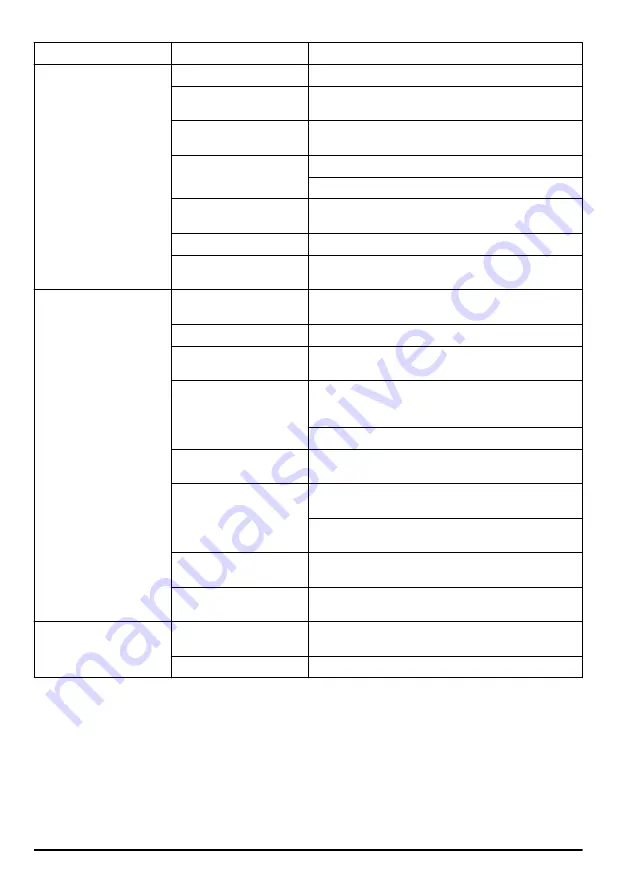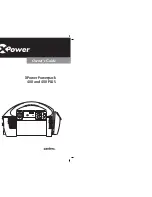
Problem
Cause
Solution
The air goes directly
through the exhaust or the
product vibrations are slow.
The rotor is blocked.
Shake the tube carefully when the tube is pressurized.
The air pressure is too low
to start the product.
Measure the air pressure. Refer to
page 10
.
The air flow is too low to
start the product.
Measure the air flow. Refer to
Technical data on page
10
.
There is a leak in the air
hose.
Attach the clamps correctly on the air hose.
Replace the air hose if it is necessary.
The product is not suffi-
ciently lubricated.
Lubricate the product. Refer to
on page 6
.
The lamella is worn out.
Replace the lamella.
The product is not attached
correctly.
Attach the product correctly. Refer to
.
The vibration of the con-
crete is not constant.
The centrifugal force is too
low.
Change to a product with more power.
The air exhaust is blocked. Remove the blockage. Clean the air exhaust.
The air pressure is too low. Measure the air pressure. Refer to
page 10
.
The product is not attached
correctly.
Attach the brackets correctly to the concrete form. Exam-
ine the bolts after 15 minutes of operation. Tighten the
bolts if they are loose.
Attach the product with the correct bolts to the brackets.
The number of products
used is not sufficient.
Add products were vibration is missing.
The correct product is not
used.
Attach high frequency products to a vertical concrete
form.
Attach lower frequency products to a horizontal concrete
form.
The air hose is too long.
Refer to the operator's manual for the air compressor for
correct length.
The concrete form is not
sufficiently rigid.
Make the concrete form more rigid.
The product does not oper-
ate correctly in a dusty en-
vironment.
There is sand or dust in the
product.
Disassemble and clean all the parts with fuel. Then lubri-
cate all parts and assemble the product.
The air exhaust is blocked. Remove the blockage. Clean the air exhaust.
8
1579 - 001 - 18.12.2020









































